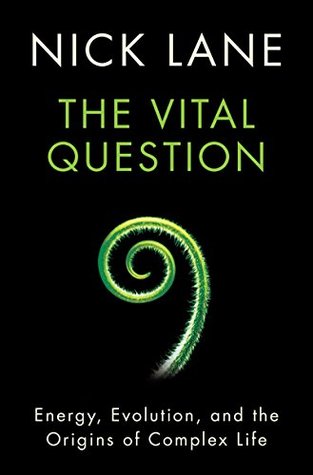More on this book
Community
Kindle Notes & Highlights
by
Nick Lane
Read between
March 10, 2017 - March 8, 2018
– plainly, mitochondria and chloroplasts do derive from bacteria. But notice I say ‘derive’. They are no longer bacteria, and don’t have any real independence, as the vast majority of the genes needed for their existence (at least 1,500 of them) are found in the nucleus, the genetic ‘control centre’ of the cell.
Margulis was right about the mitochondria and chloroplasts; by the 1980s, few doubters remained. But her enterprise was much greater: for Margulis, the entire complex cell, now generally known as the eukaryotic cell (from the Greek meaning ‘true nucleus’) was a patchwork of symbioses.
My argument in this book is that there are in fact strong constraints on evolution – energetic constraints – which do make it possible to predict some of the most fundamental traits of life from first principles. Before we can address these constraints, we must consider why evolutionary biology is not predictive, and why these energetic constraints have passed largely unnoticed; indeed, why we have hardly even noticed there is a problem.
If life is about information, and information is unconstrained, then we can’t predict what life might look like on another planet, only that it will not contravene the laws of physics.
There is no hard and fast dividing line. Geochemistry gives rise seamlessly to biochemistry. From this point of view, the fact that we can’t distinguish between geology and biology in these old rocks is fitting. Here is a living planet giving rise to life, and the two can’t be separated without splitting a continuum.
century. The interpenetrating opposites are genes and environment, otherwise known as nature and nurture. Biology is all about genes, and their behaviour is all about the environment. What else is there, after all? Well, biology is not only about genes and environment, but also cells and the constraints of their physical structure, which we shall see have little to do with either genes or environment directly. The predictions that arise from these disparate world views are strikingly different.
if there are no fundamental constraints on cell structure, then rising oxygen levels should have made greater complexity possible regardless of how exactly it evolved.
We would predict that oxygen would release the constraints on all cells, enabling a polyphyletic radiation with all kinds of different bacteria becoming more complex independently. But that’s not what we see.
a population of morphologically complex eukaryotic cells arose on a single occasion – and all plants, animals, algae and fungi evolved from this founder population.
Any common ancestor is by definition a singular entity – not a single cell, but a single population of essentially identical cells.
short, evolutionary theory predicts that there should be multiple – polyphyletic – origins of traits in which each small step offers a small advantage over the last step. Theoretically that applies to all traits, and it is indeed what we generally see. So powered flight arose on at least six different occasions in bats, birds, pterosaurs and various insects; multicellularity about 30 times,
Plainly there must be some advantage to eukaryotes indulging in total sex; but if so, we would expect that at least some types of bacteria would do something similar, even if the detailed mechanisms were different. To the best of our knowledge, none ever did. The same goes for the nucleus and phagocytosis – and more or less all eukaryotic traits.
there is very strong evidence that the intermediates were not, in fact, outcompeted to extinction by more sophisticated eukaryotes. They still exist. We met them already – the ‘archezoa’, that large group of primitive eukaryotes that were once mistaken for a missing link. They are not true evolutionary intermediates, but they’re real ecological intermediates. They occupy the same niche. An evolutionary intermediate is a missing link – a fish with legs, such as Tiktaalik, or a dinosaur with feathers and wings, such as Archaeopteryx. An ecological intermediate is not a true missing link but it
...more
Yet DNA, the beguiling code-script which seems to promise every answer, has made us forget Schrödinger’s other central tenet – that life resists entropy, the tendency to decay.
The environment, by its very nature, seems extraneous to life; we shall see that it is not at all.
Spores are not technically living, even though most biologists would classify them as alive, because they retain the potential to revive. They can go back to living, so they’re not dead. I don’t see why we should view viruses in any different light: they too revert to copying themselves as soon as they are in the right environment. Likewise tardigrades. Life is about its structure (dictated in part by genes and evolution), but living – growing, proliferating – is as much about the environment, about how structure and environment interrelate. We know a tremendous amount about how genes encode
...more
The idea that life is a low-entropy state – that it is more organised than a soup – is not strictly true. The order and organisation of life is more than matched by the increased disorder of the surroundings.
ultimately, the power for growth comes from the reactivity of the environment, which fluxes continuously through living cells


